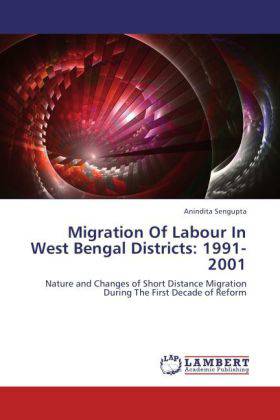
- Afhalen na 1 uur in een winkel met voorraad
- Gratis thuislevering in België vanaf € 30
- Ruim aanbod met 7 miljoen producten
- Afhalen na 1 uur in een winkel met voorraad
- Gratis thuislevering in België vanaf € 30
- Ruim aanbod met 7 miljoen producten
Zoeken
Migration Of Labour In West Bengal Districts: 1991-2001
Nature and Changes of Short Distance Migration During The First Decade of Reform
Anindita Sengupta
Paperback | Engels
€ 77,95
+ 155 punten
Omschrijving
This research monograph attempts to find out the correlates of inter district migration in West Bengal during the post reform period and also examines whether there has been any change in the relative significance of the explanatory factors of each kind of migration over the period of one decade of economic reform. By applying Principal Component Analysis and ordinary least square with data from secondary sources (Census reports, Statistical Abstracts, District Statistical Handbooks etc) this study locates some major determinants in the process of rural-rural, rural-urban, urban-rural and urban-urban migration by the districts in West Bengal. For each type of migration, a neo-classical gross migration function is fitted by using the rate of migration as dependent variable. For rural-rural migration, the distances between districts , wage-differential , cropping intensities of the source districts , differences between the percentage shares of agricultural workers in rural workers of the source districts and those of destination districts , differences between the areas under foodgrain cultivation of the destination districts are the significant explanatory factors.
Specificaties
Betrokkenen
- Auteur(s):
- Uitgeverij:
Inhoud
- Aantal bladzijden:
- 248
- Taal:
- Engels
Eigenschappen
- Productcode (EAN):
- 9783847338789
- Verschijningsdatum:
- 6/01/2012
- Uitvoering:
- Paperback
- Afmetingen:
- 152 mm x 229 mm
- Gewicht:
- 367 g

Alleen bij Standaard Boekhandel
+ 155 punten op je klantenkaart van Standaard Boekhandel
Beoordelingen
We publiceren alleen reviews die voldoen aan de voorwaarden voor reviews. Bekijk onze voorwaarden voor reviews.











